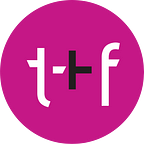The NCredible Framework Quadrant Descriptions: Exploratory
Before reading this article, learn about The NCredible Framework.
Exploratory learning reveals realities and aspirations.
Learning Objectives in the exploratory quadrant describes the variety of behaviors, aptitudes, attitudes and emotions in people’s realities within an organization’s domain of interest. As a reminder, a Learning Objective is an aligned and affinitized set of questions with similar scope. These Learning Objectives compel teams to isolate and prioritize the critical elements of people’s lived experiences. The elements can then reveal inventories, journeys, workarounds, and ideals. The revealed realities and aspirations present themselves as foundation for fixes and characteristics, or as long-term design tools that anchor product development in the human story. Questions in this quadrant are typically context-constrained to the organization’s domain or offering. The context aperture is set by the team.
Example question
How do people make important financial decisions?
The team seeks to learn about all considerations and actions people take to achieve this goal. People will have varied motivations, purposes, actions, and expectations when it comes to making financial decisions, and Exploratory learning will catalog both universal factors (what might be true for everyone) as well as the variety within that (how people are different). By understanding this breadth of decision-making characteristics, the organization can determine what to focus on among the array of possibilities.
Study Design Considerations
- Engage “representative” populations to obtain variety (e.g., household decision-makers with various demographics and psychographics)
- Observe and experience the context (e.g., use an approach that will yield honest behavioral observation and deep, engaged conversation on the topic)
- Vary the engagement approach to suit different communication styles (e.g., do not compel participants to only discuss finances, and instead engage them with activities and stimuli to allow them to uncover nuanced details that are hard to vocalize)
Case Study
Background
Education Resource Strategies (ERS) is a non-profit that partners with schools and districts to help them better leverage their resources. They provide self-serve tools as well as workshops and trainings to design school systems, funding portfolios and other education needs so that all school children are considered in the strategy. With a wide variety of ERS resources, educators and strategists shared that they struggled to find the best tool to implement in a given scenario. These constituents also wondered how they might leverage these tools together — in what sequence and combination. ERS realized that although they offered profound services and tools to school districts, sometimes this depth led to confusion or analysis paralysis.
When we first engaged with ERS, it was clear that they had many questions that could not be addressed in a single study. We conducted an NCredible Framework workshop with them, as well as a targeted Audience Sketch Work Session. The Audience Work Session highlighted internal beliefs about the various categories of constituents to which ERS can direct their services.
During the NCredible Workshop, we determined roughly ten possible studies that ERS could address. The team collaborated with us to determine the highest priority questions to address in relation to their time and budget constraints. We selected a study in which the questions would focus on website categories of use and action — specifically examining digital tools.
Learning Objective
To understand constituents’ perceptions of ERS tools, learn about what is working and not working, and identify what could be improved.
Sample
We spoke with digital tool decision-makers in ERS-selected high priority school districts. The variety of roles included Assistant Superintendents, CFOs, Directors of Strategic Programs, and Budget Planners. We sought a mix of participants with and without ERS web experience.
Methods
To ease the time burden on participants, we conducted Remote In-Depth Interviews. We asked participants to complete a homework assignment about how they make resource decisions. We then examined topics such as how they solve problems, how they conduct research into various tools, how they ultimately make a decision about tool usage and activation, and what the impact of these resourcing decisions had on their district.
Outcomes
ERS needed to know how best to position their already well-designed tools. As such, we presented to them opportunity spaces on the service that these tools can provide. They used these opportunity spaces to then audit their existing offerings to design combinations, messages, sequences, and other modes of delivery to help decision-makers.
In addition, we looked at our sample and crafted a framework for them to consider the design of future personas. We mapped these participants against the opportunity spaces so that they could begin to see connections between the design of their offerings and the people they serve.
Read about the other quadrants — Discovery, Definition, Validation.
